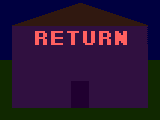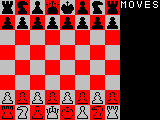

----------------------------------------- | H | O | U | S | E | | 3.7/4 | 1/1 | 1.8/2 | 0.9/1 | 0.6/1 | ----------------------------------------- |
-----------------------------------------
| H | O | U | S | E |
| 3.7/4 | 1/1 | 1.8/2 | 0.9/1 | 0.6/1 |
-----------------------------------------
| U |
| 1.8/2 |
---------
| T |
| 0.8/1 |
---------
|
-----------------------------------------
| H | O | U | S | E |
| 3.7/4 | 1/1 | 1.8/2 | 0.9/1 | 0.6/1 |
-----------------------------------------
| U |
| 1.8/2 |
-------------------------------------------------
| T | R | I | V | I | A |
| 0.8/1 | 1/1 | 1/1 | 5.3/5 | 1/1 | 0.9/1 |
-------------------------------------------------
|
-----------------------------------------
| H | O | U | S | E |
| 3.7/4 | 1/1 | 1.8/2 | 0.9/1 | 0.6/1 |
-----------------------------------------
| U |
| 1.8/2 |
---------------------------------------------------------
| T | R | I | V | I | A | S |
| 0.8/1 | 1/1 | 1/1 | 5.3/5 | 1/1 | 0.9/1 | 0.9/1 |
---------------------------------------------------------
|
-----------------------------------------
| H | O | U | S | E |
| 3.7/4 | 1/1 | 1.8/2 | 0.9/1 | 0.6/1 |
-----------------------------------------
| U |
| 1.8/2 |
---------------------------------------------------------
| T | R | I | V | I | A | S |
| 0.8/1 | 1/1 | 1/1 | 5.3/5 | 1/1 | 0.9/1 | 0.9/1 |
---------------------------------------------------------
| E |
| 0.6/1 |
---------
| N |
| 1.1/1 |
---------
| I |
| 1/1 |
---------
| C |
| 3/3 |
---------
| E |
| 0.6/1 |
---------
|
-----------------------------------------
| H | O | U | S | E |
| 3.7/4 | 1/1 | 1.8/2 | 0.9/1 | 0.6/1 |
-----------------------------------------
| U |
| 1.8/2 |
---------------------------------------------------------
| T | R | I | V | I | A | S |
| 0.8/1 | 1/1 | 1/1 | 5.3/5 | 1/1 | 0.9/1 | 0.9/1 |
---------------------------------------------------------
| C | E | N | T |
| 3/3 | 0.6/1 | 1.1/1 | 0.8/1 |
-----------------------------------------
| T | E | N |
| 0.8/1 | 0.6/1 | 1.1/1 |
-------------------------
| I |
| 1/1 |
---------
| C |
| 3/3 |
---------
| E |
| 0.6/1 |
---------
|
---------------- | I | T | | 1/1 | 0.8/1 | ---------------- | S | O | |0.9/1 | 1/1 | ---------------- |
-----------------------------------------
| H | O | U | S | E |
| 3.7/4 | 1/1 | 1.8/2 | 0.9/1 | 0.6/1 |
-----------------------------------------
| U |
| 1.8/2 |
---------------------------------------------------------
| T | R | I | V | I | A | S |
| 0.8/1 | 1/1 | 1/1 | 5.3/5 | 1/1 | 0.9/1 | 0.9/1 |
---------------------------------------------------------
| C | E | N | T |
| 3/3 | 0.6/1 | 1.1/1 | 0.8/1 |
-----------------------------------------
| T | E | N |
| 0.8/1 | 0.6/1 | 1.1/1 |
-------------------------
| I |
| 1/1 |
---------------------------------------------------------
| P | R | I | C | I | N | G |
| 2.8/3 | 1/1 | 1/1 | 3/3 | 1/1 | 1.1/1 | 2.3/2 |
---------------------------------------------------------
| E |
| 0.6/1 |
---------
|
-----------------------------------------
| H | O | U | S | E |
| 3.7/4 | 1/1 | 1.8/2 | 0.9/1 | 0.6/1 |
-----------------------------------------
| U | | P |
| 1.8/2 | | 2.8/3 |
---------------------------------------------------------
| T | R | I | V | I | A | S |
| 0.8/1 | 1/1 | 1/1 | 5.3/5 | 1/1 | 0.9/1 | 0.9/1 |
---------------------------------------------------------
| C | E | N | T |
| 3/3 | 0.6/1 | 1.1/1 | 0.8/1 |
-----------------------------------------
| T | E | N |
| 0.8/1 | 0.6/1 | 1.1/1 |
-------------------------
| I |
| 1/1 |
---------------------------------------------------------
| P | R | I | C | I | N | G |
| 2.8/3 | 1/1 | 1/1 | 3/3 | 1/1 | 1.1/1 | 2.3/2 |
---------------------------------------------------------
| E |
| 0.6/1 |
---------
|
Ltr PV* SV** Ltr PV SV Ltr PV SV A 0.9 1 B 4.3 4 C 3 3 D 2.1 2 E 0.6 1 F 3.8 4 G 2.3 2 H 3.7 4 I 1 1 J 10.1 10 K 4.4 4 L 1.3 1 M 3.6 4 N 1.1 1 O 1 1 P 2.8 3 Q 11.8 12 R 1 1 S 0.9 1 T 0.8 1 U 1.8 2 V 5.3 5 W 3.9 4 X 11.4 11 Y 3.8 4 Z 9.3 9 WLD 0 0 |


